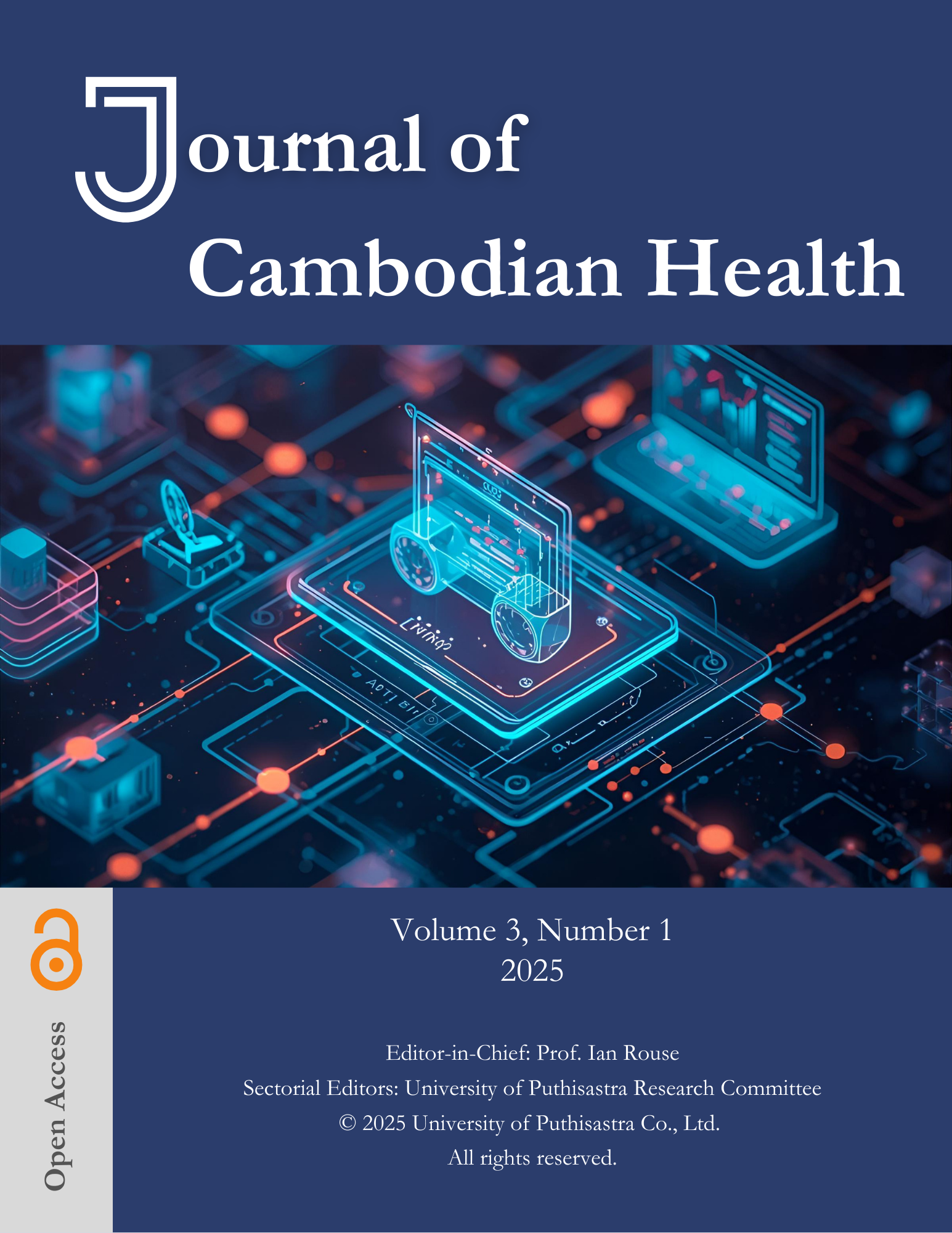Abstract
Vitamin C, also known as L-ascorbic acid, is a vital micronutrient for human health, involved in immune system function, carnitine and catecholamine metabolism, iron absorption, and collagen production, which helps hold cells together. This study aims to quantify and compare the vitamin C content in six different fruit samples: carrot (Daucus carota subsp. sativus), apple (Malus domestica), guava (Psidium guajava L. Meer), passion fruit (Passiflora edulis), Pursat orange (Citrus sinensis (L.) Osbeck), and fresh sugarcane juice (Saccharum officinarum) using High-Performance Liquid Chromatography (HPLC). A standard curve was prepared using L-ascorbic acid solutions at concentrations ranging from 10.0 to 200.0 µg/mL, showing excellent linearity with an R² value of 0.9996. Accuracy was expressed as percent recovery, ranging between 80% and 120%, while the %RSD was below 5%, indicating high precision and reliability of the method. Among the tested samples, guava (Psidium guajava L. Meer) had the highest vitamin C concentration at 88.736 mg/mL, whereas apple (Malus domestica) and carrot (Daucus carota subsp. sativus) showed the lowest levels. According to the U.S. Food and Drug Administration (FDA), vitamin C intake at moderate levels ranging from 30 to 180 mg per day, the absorption efficiency of vitamin C is estimated to be between 70% and 90%. These findings highlight guava and Pursat orange as rich dietary sources of vitamin C, supporting their potential role in meeting daily nutritional requirements.
References
Abe-Matsumoto, L. T., Sampaio, G. R., & Bastos, D. H. M. (2020). Is Titration as Accurate as HPLC for Determination of Vitamin C in Supplements? —Titration versus HPLC for Vitamin C Analysis. American Journal of Analytical Chemistry, 11(07), 269–279. https://doi.org/10.4236/ajac.2020.117021
Alberts, A., Moldoveanu, E.-T., Niculescu, A.-G., & Grumezescu, A. M. (2025). Vitamin C: A Comprehensive Review of Its Role in Health, Disease Prevention, and Therapeutic Potential. Molecules, 30(3), 748. https://doi.org/10.3390/molecules30030748
Bellows, L., & Moore, R. (2012). Water-soluble vitamins: B-complex and vitamin C (Fact Sheet No. 9.312). Colorado State University Extension. https://extension.colostate.edu/docs/foodnut/09312.pdf
Cotruţ, R., & Bădulescu, L. (2016). UPLC Rapid Quantification of Ascorbic Acid in Several Fruits and Vegetables Extracted Using Different Solvents. Agriculture and Agricultural Science Procedia, 10, 160–166. https://doi.org/10.1016/j.aaspro.2016.09.047
European Commission. (2002). Commission decision of 12 August 2002 implementing Council Directive 96/23/EC concerning the performance of analytical methods and the interpretation of results. Official Journal of the European Union, L 221, 8
FDA. (2018). Frequently Asked Questions for Industry on Nutrition Facts Labeling Requirements. https://www.fda.gov/media/99069/download
Harris, D. C. (2010). Quantitative chemical analysis. Macmillan.
Hernández, Y., Lobo, M. G., & González, M. (2006). Determination of vitamin C in tropical fruits: A comparative evaluation of methods. Food Chemistry, 96(4), 654–664. https://doi.org/10.1016/j.foodchem.2005.04.012
Kalra, K. (2011). Method development and validation of analytical procedures. Quality Control of Herbal Medicines and Related Areas, 4, 3-16. https://cdn.intechopen.com/pdfs/23463/InTech-Method_development_and_validation_of_analytical_procedures.pdf
Lemmens, E., Alós, E., Rymenants, M., De Storme, N., & Keulemans, W. (Johan). (2020). Dynamics of ascorbic acid content in apples (Malus x domestica) during fruit development and storage. Plant Physiology and Biochemistry, 151, 47–59. https://doi.org/10.1016/j.plaphy.2020.03.006
Mayo Clinic Staff. (2023). Vitamin C. Mayo Clinic. https://www.mayoclinic.org/drugs-supplements-vitamin-c/art-20363932
Mahawar, S., Pant, P., Angirekula, U. B., Tomar, M., Uchoi, J., Bansal, S., Bollinedi, H., Dubey, A. K., Kakoti, R. K., Thirugnanavel, A., Bhardwaj, R., Malik, S. K., & Riar, A. (2025). Decoding citrus diversity: Insights from multivariate data analysis of nutritional and antioxidant profiles in diverse species and hybrids. Applied Food Research, 5(1), 100858. https://doi.org/10.1016/j.afres.2025.100858
Mandal, G. (2017). Production Preference and importance of passion fruit (Passiflora Edulis): A review. 4(1), 27–30. https://www.researchgate.net/publication/319313789_Production_Preference_and_importance_of_passion_fruit_Passiflora_Edulis_A_review
Najwa, F. R., & Azrina, A. (2017). Comparison of vitamin C content in citrus fruits by titration and high-performance liquid chromatography (HPLC) methods. International Food Research Journal, 24(2), 726–733. https://search.proquest.com/openview/41b103f52a33e6265e26d95a1f279fd2/1?pq-origsite=gscholar&cbl=816390
National Institutes of Health. (2021, March 26). Vitamin C. National Institutes of Health; National Institutes of Health. https://ods.od.nih.gov/factsheets/VitaminC-HealthProfessional/
Rahman Khan, M. M., Rahman, M. M., Islam, M. S., & Begum, S. A. (2006). A simple UV-spectrophotometric method for the determination of vitamin C content in various fruits and vegetables at Sylhet area in Bangladesh. Journal of Biological Sciences, 6(2), 388–392. https://doi.org/10.3923/jbs.2006.388.392
Škugor Rončević, I., Skroza, D., Vrca, I., Kondža, A. M., & Vladislavić, N. (2022). Development and Optimization of Electrochemical Method for Determination of Vitamin C. Chemosensors, 10(7), 283. https://doi.org/10.3390/chemosensors10070283
The Nutrition Source. (2012, September 18). Vitamin C. The Nutrition Source. https://nutritionsource.hsph.harvard.edu/vitamin-c/
Yulian, A., Yunita, R., Nadia, D., Afifah, F., Kanza, F., Trianingsih, F., Erlina, G., & Putri, A. (2023). Please do not adjust margins Analysis of antacid tablets using the alkalimetric titration method. Asian Journal of Analytical Chemistry, 1(1), 25–31. https://doi.org/10.53866/ajac

This work is licensed under a Creative Commons Attribution-NonCommercial-ShareAlike 4.0 International License.
Copyright (c) 2025 Journal of Cambodian Health

